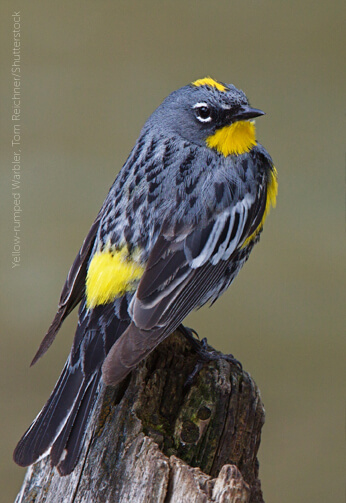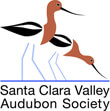Largest City in Northern California to Adopt Bird-Friendly Building Guidelines
 |
(Washington, D.C. and Cupertino, CA, March 5, 2015) San José, the capital of Silicon Valley, has become the fourth and largest California city to enact bird-friendly building guidelines. Previously, ordinances were adopted by San Francisco in 2011 and Oakland in 2013, while guidelines were adopted by Sunnyvale in 2014.
The implementation of Bird-Safe Building Design Standards in San José concludes several months of research led by the San José Environmental Services Department (ESD) and collaborative work with the Santa Clara Valley Audubon Society (SCVAS) and the Loma Prieta Chapter of the Sierra Club. San José's guidelines are based on American Bird Conservancy's Bird Friendly Building Design and will be applied citywide on a voluntary basis.
“We are very excited that the city has taken action to reduce the risk of bird collision with glass windows and building facades. It shows that nature and birds are an important part of the city's sustainable future and are valued by San José's residents, leadership, and city staff,” said Dr. Shani Kleinhaus, Environmental Advocate for SCVAS, who actively worked with city staff on this action. “It is especially important for San José because we are located in the Pacific Flyway Migration Corridor and as such, many millions of birds move through this area twice a year.”
Birds strike glass because they cannot see it as an obstacle. They fly into reflections of trees and sky, or attempt to fly through transparent glass walls. Collision with glass is now implicated in the decline of many migratory species in the United States.
“Without question, bird collisions are one of the most significant causes of bird mortality worldwide. It's a problem that is probably escalating every year,” said Dr. Christine Sheppard, Birds Collisions Campaign Manager for American Bird Conservancy (ABC) and one of the world's leading experts on the issue.
“Implementation of Bird-Friendly Building Guidelines constitutes a giant step forward in better protecting our birds and wildlife. Anything we can do to reduce the hazards our environment poses for local and migratory birds is the right thing to do,” said Mike Ferreira, Conservation Chair for the Loma Prieta Chapter of the Sierra Club.
“We worked closely with our city departments and non-profit partners to craft and implement a new set of bird-friendly guidelines in San José to protect birds and wildlife,” said Kerrie Romanow, director of the San José ESD. “We continue to work with our local partners to reach common goals and protect wildlife and the environment.”
ESD staff have developed a factsheet and checklist that provide information on bird-safe design and outline voluntary bird-safe building measures, such as recommendations to:
- Reduce large areas of transparent or reflective glass.
- Avoid transparent glass skyways, walkways, and entryways, as well as free-standing glass walls and transparent building corners.
- Avoid the funneling of open space toward a building façade.
- Strategically place landscaping to reduce reflection and views of foliage through glass.
- Reduce or eliminate up-lighting and spotlights on buildings.
- Turn non-emergency lighting off at night, especially during bird migration season (February-May and August-November).
“Parts of this problem are very simple to understand. For example, cues like window frames and even dirt tell people where to expect glass. Birds don't learn these cues and so they take reflections literally or try to fly through transparent glass to reach something beyond it,” according to Dr. Sheppard.
Dr. Sheppard authored the widely used Bird-Friendly Building Design publication (available at collisions.abcbirds.org), which provides comprehensive solutions to reduce bird mortality from building collisions. The 58-page publication also focuses on the causes of collisions and provides a detailed appendix on the biological science behind the issue.
Reduction of bird strikes with new buildings can be achieved with simple and cost-effective means, said Dr. Kleinhaus. With appropriate architectural design, many bird hazards can simply be avoided. Also, visual cues may be implemented. For example, fritting—the placement of ceramic lines or dots on glass—is often already used to reduce air conditioning costs by lowering heat gain in windows. When fritting is applied in patterns that birds can see, it reduces the likelihood of collisions while still allowing people to enjoy natural light and to see out clearly from the inside of the building.
In Silicon Valley, companies such as Facebook and Intuit are applying bird-friendly frit to glass windows and facades in their new campuses.
While bird conservationists have long known that a large number of birds are killed each year by glass, the issue of fatal bird collisions gained national attention following release of the most comprehensive study of its kind, the peer-reviewed, “Bird–building Collisions in the United States: Estimates of Annual Mortality and Species Vulnerability.” The study was authored by federal scientists at the Smithsonian Conservation Biology Institute and the U.S. Fish and Wildlife Service. It found that between 365 and 988 million birds are likely killed in the United States each year as a result of collisions with buildings.
Some species seem disproportionately vulnerable to collision with buildings. In San José, vulnerable species include: Anna's Hummingbird, Cedar Waxwing, Yellow-rumped Warbler, Lesser Goldfinch, Hermit Thrush, Varied Thrush, American Robin, and Cooper's Hawk.
In July 2014, Dr. Kleinhaus submitted an opinion letter that was published in the San José Mercury News titled, “Birds and glass: San José can prevent needless deaths of birds with building rules.”
ABC's efforts to reduce fatal bird collisions in the U.S. are made possible in part by the generous support of the Leon Levy Foundation.
 | American Bird Conservancy is the Western Hemisphere's bird conservation specialist—the only organization with a single and steadfast commitment to achieving conservation results for native birds and their habitats throughout the Americas. With a focus on efficiency and working in partnership, we take on the toughest problems facing birds today, innovating and building on sound science to halt extinctions, protect habitats, eliminate threats, and build capacity for bird conservation. |
 | Santa Clara Valley Audubon Society's mission is to preserve, to enjoy, to restore and to foster public awareness of native birds and their ecosystems, mainly in Santa Clara County. To accomplish this mission we promote scientifically sound conservation strategies, educate our community about the benefits of preserving and enjoying nature, and support research into maintaining, restoring and understanding native ecosystems, particularly those of birds. |
 | The Sierra Club Loma Prieta Chapter offers hikes and outdoor recreation for people of all ages, advocates for policies that protect our natural environment, supports environmental candidates for public office, and provides opportunities for people who want to develop leadership skills to give back to the community and help the environment. |


















































